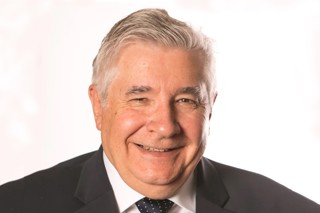By Professor Jim Saker, director of the Centre for Automotive Manag ement at Loughborough University Business School
ement at Loughborough University Business School
It’s strange when a theme starts to emerge and you don’t know where it’s coming from. I am sure there is some psychological phenomenon that explains why when your consciousness has been raised about a subject you tend to hear it every time you turn on the news or read a paper. The problem is that this tends to invade your thinking in the same way as background music in a bar does when they play a piece of music that you like.
Maybe it’s just in my world that people seem to be fixating on the issue of whether it is better to view the world as a zero sum game or whether by collaborating or cooperating you can produce more than one winner.
I was showing a video of Prof Michael Porter from Harvard talking about how to compete in business to a group of dealer general managers when the conversation turned to whether it was more beneficial for companies to collaborate than to compete head on. Does it always have to be a zero sum game of winners and losers?
The discussion moved to how this applied in the motor industry and the delegates were able to give many examples where motor manufacturers had cooperated to share powertrain options through to producing the same vehicle on the same production line and simply rebadging it with their own brands. It was easy to see the benefits of reduced cost and development efficiencies that would support active cooperation.
The interesting issue was that the delegates missed the point that both Porter and a number of business writers have been advocating that cooperation not only generates cost savings, it can actually increase the size of the market providing the opportunity for there to be, in his terms, ‘more winners’. The challenge was how could this possibly apply in the retail automotive sector?
There was general scepticism among the delegates. They argued that for decades dealerships have gone head to head, often not only competing against retailers from other manufacturers, but more often than not competing against the next dealer from the same franchise.
Although understandable if these were from competing dealer groups, in many cases they were within the same company and offering the same franchise deliberately competed against each other, often doing their best to scupper the sale of the internal competitor. Stories abounded of where one dealership in the group would deliberately sell off a car cheaply to stop another dealer who had a customer for the car getting the sale.
Although some CEOs argue that internal competition is good, one is left wondering whether the profitability of the organisation might just be that bit better if there was a greater spirit of cooperation.
Perhaps the strangest situation is where one part of a dealership tries to ‘rip off’ the other department, pricing jobs deliberately high for internal work. The delegates quoted an example from their own organisation where new car sales preparation was being outsourced to stop the other department from profiting from this activity.
As an outsider it appears that the general manager is refereeing an ongoing war of attrition between departments. The question is whether this is really the most efficient way of doing things.
Benefiting from cooperation
We then got to the question of whether dealerships from different franchises owned by different companies could benefit from cooperation. The class was quiet for a while and we started to discuss how other retailers cooperated. The conversation moved on to destination locations and retailers paying for Christmas lights and decorations to attract shoppers to an area.
Then a voice with a slight Liverpool accent said: “It’s obvious really, because of planning regulations in most towns all the dealerships are located together, but we don’t actually cooperate to do anything.”
None of the general managers in the group could remember an occasion when dealers had actually worked together to promote their ‘car alley’ or business area. Maybe, by working together and actually promoting a group of competing franchises in a particular location, the impact of increased footfall might produce a win-win situation and develop increased customer awareness. The success of locations such as the retail park at Bicester show that brands working together can produce more than individuals operating alone. Shopping centres throughout the country promote themselves as destination locations with great success. Perhaps it is time for the sector to explore this more seriously and see whether we can generate more ‘winners’ and fewer ‘losers.’
As the delegates walked out one said, ‘Good discussion Jim, but in reality it’s back to the battlefield.’

















Jack - 07/08/2013 13:11
As usual, Jim talks a lot of sense. Why shouldn't groups of similar retailers promote their businesses and products jointly? Why couldn't parts vans deliver products from multiple brands and dealerships and share the (reduced) costs? Until now, our attitude has been to battle each other, and you've all seen this happen between dealerships in the same ownership! Even between departments on the same site? Maybe it's time for a little trust and common sense to be tried? Then perhaps we could concentrate on customer service and make that the differentiator. OK, I'll go and smell the coffee now...